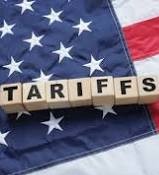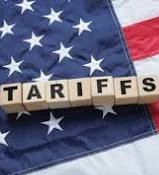
Washington, D.C. — May 10, 2025
China’s exports to the United States have plummeted, marking a significant shift in trade patterns and underscoring the impact of President Donald Trump’s new tariff policy. The decline in Chinese shipments follows the introduction of a 10% baseline tariff on imports, which has reshaped business strategies and forced industries to reconsider their reliance on Chinese goods.
Sharp Decline in Chinese Exports
According to recent trade data, China’s exports to the U.S. have dropped by 18% in the first quarter of 2025 compared to the same period last year. Key industries—including electronics, machinery, and consumer goods—have been particularly affected, as American importers explore alternative suppliers in response to higher costs.
“U.S. businesses are shifting their sourcing strategies to avoid tariff burdens, leading to a decline in demand for Chinese-made goods,” said Dr. Michael Thompson, an international trade analyst. “We’re witnessing a realignment of global supply chains.”
Impact on U.S. Businesses and Consumers
While the tariff policy aims to bolster American manufacturing, businesses that rely on imported components from China are facing rising costs, which could translate to higher prices for consumers.
Major retailers and manufacturers are adjusting their supply chains, with many exploring trade alternatives in Vietnam, India, and Mexico to offset the economic impact of tariffs.
China’s Response and Global Economic Shifts
The Chinese government has responded to the sharp decline in exports by expanding trade partnerships with European and Southeast Asian nations. Beijing has also expressed concerns that strained U.S.-China trade relations could further disrupt global economic stability.
China’s Ministry of Commerce issued a statement criticizing the tariff policy, warning that prolonged trade barriers could lead to economic slowdowns on both sides.
Future Outlook
As Trump’s tariff enforcement continues, analysts predict further trade disruptions, with potential consequences for inflation, job markets, and investment flows.
Trade negotiations remain uncertain, but officials from both nations indicate that diplomatic efforts may be necessary to prevent a prolonged economic standoff.
Would you like me to add insights from affected industries or predictions on long-term trade outcomes?




